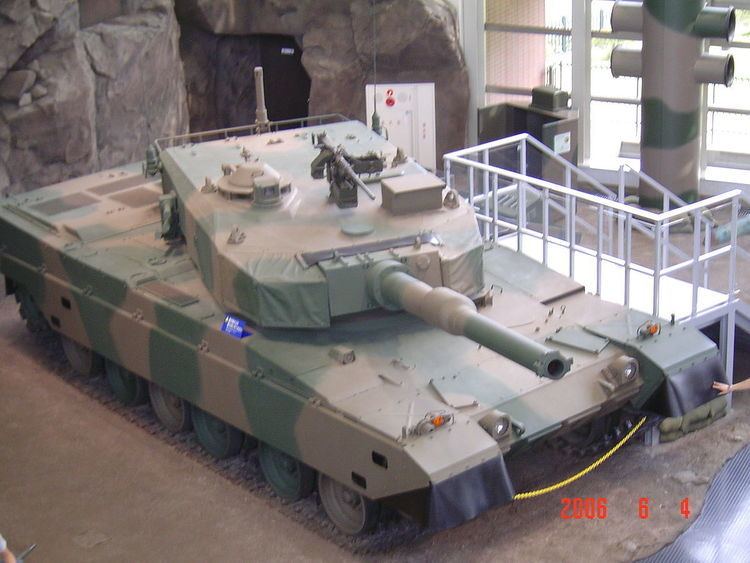 | ||
The Japanese defense industry is the major supplier of the nations own Self-Defense Forces. Production costs are high, due to several factors: the successful Japanese economy of the postwar period allowed for generous defense spending; few products are exported, keeping production numbers low; research and development is done independently where possible, securing national self-sustainability; public investment in Japan tends to be uneconomic, aimed largely at gaining local voter support.
Contents
Postwar history
Dismantled by occupation authorities after World War II, armaments production in Japan resumed shortly before the end of the Allied occupation in 1952, when the nation's manufacturers began repairing and maintaining equipment for United States forces operating in Asia. Individual producers emerged as affiliates of larger industrial conglomerates, including the former zaibatsu of Mitsubishi and Sumitomo. After 1954 the defense industry began to arm the SDF, at first making only slight improvements on United States-designed equipment manufactured for local use. The Japanese defense industry received about US$10 billion worth of advanced technology from the United States between 1950 and 1983.
In July 1970, then Defense Agency director general Nakasone Yasuhiro established five objectives for the defense industry:
- to maintain Japan's industrial base for national security
- to acquire equipment from Japan's domestic research and development and production efforts
- to use civilian industries for domestic arms production
- to set long-term goals for research and development and production
- to introduce competition into defense production
By the late 1970s, indigenous suppliers had developed and produced an almost complete range of modern equipment, including aircraft, tanks, artillery, and major surface and underwater naval combatants. Certain types of highly sophisticated weaponry, including F-15 fighters, P-3C Orion antisubmarine aircraft, and 8-inch howitzers, were produced under license. Except for the most complex and costly items, such as the E-2C airborne earlywarning aircraft, little was purchased complete from foreign suppliers.
The FSX
Over 25% of the ¥18.4 trillion Mid-Term Defense Estimate for FY 1986 through FY 1990 was allocated for equipment procurement, most of it domestically produced; but the most lucrative defense contract was for the FSX. Envisioned as a successor to the F-1 support fighter in the ASDF inventory, the FSX was expected to take ten years to develop at an estimated cost of ¥200 billion. In October 1985, the Defense Agency began considering three development options for the FSX: domestic development, adoption of an existing domestic model, or adoption of a foreign model. The agency originally favored domestic development. But by late 1986, after consultation and much pressure from the United States, it decided to consider a coproduction agreement with the United States. And in October 1987, Japanese and United States defense officials meeting in Washington decided on a joint project to remodel either the F-15 or the F-16. The Defense Agency selected the F-16.
Once the agreement was reached, it came under heavy criticism from members of the United States Congress concerned about loss of key United States technologies and technological leadership, risks of Japanese commercialization of technology at United States expense, and an insufficient share in the project for United States-based firms. As a result of the controversy, in early 1989 the United States demanded and obtained a review and revision of the agreement, restricting technology transfer and specifying that United States-based firms would receive 40% of the work. The controversy left bitterness on both sides, and Japanese industrialists, convinced that a Japanese-designed and Japanese-developed FSX would be superior to a modified F-16 codeveloped by Japan and the United States, were irritated at United States pressure to renegotiate. They considered the agreement already favorable to the United States. Japanese industrialists and defense planners seem to be inclined to be self-sufficient with respect to future weapons research.
The FSX was never built, instead, the Japanese side decided to forgo cooperation with the Americans and develop a successor to the F-16 completely on their own. The result was the Mitsubishi F-2, entering service in 2001 finally. The Japanese aerospace industry is successful, also planning to launch a new Mitsubishi airplane.
